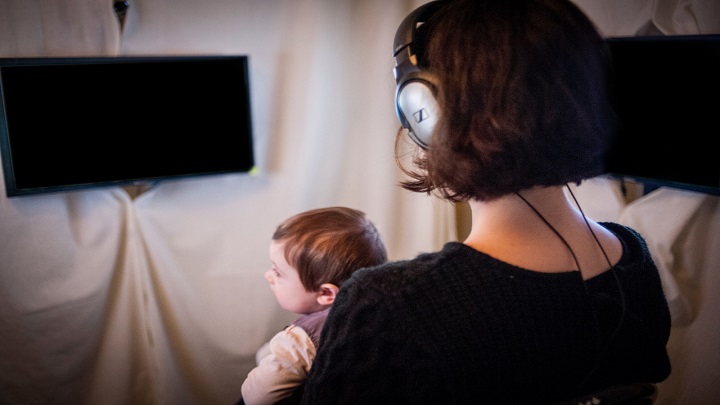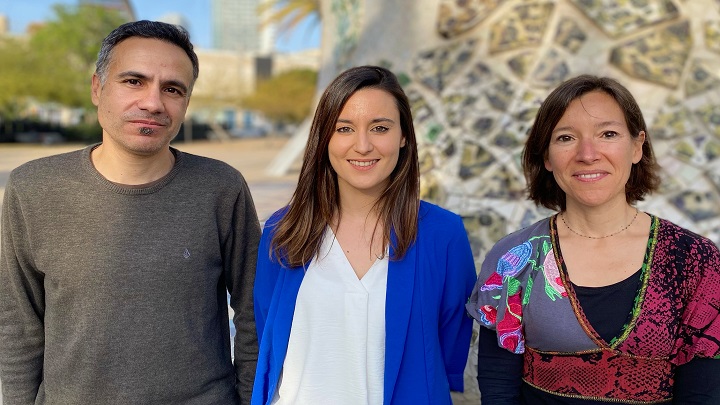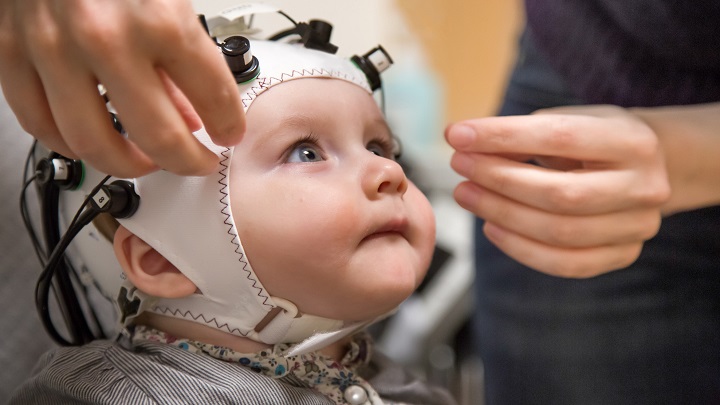Speech rhythm and pitch are fundamental in babies’ language acquisition

Language acquisition is a complex process that requires different neural and cognitive skills since early childhood. One of children’s big challenges in language learning is to distinguish the words that are grammatically linked to each other, even though they hear one word after the other. We can easily understand that in the sentence “She, who never drinks coffee, sleeps more”, “she” is the subject to the verb “sleep”, just like in the —easier— sentence “She sleeps well”, although the first sentence has many words in between the subject and the verb. However, how does a child’s brain cope with having to find regularities between the words that are separated from one another in a sentence? Since there are many words that could go together, it seems impossible to keep track of them all.

Language acquisition is a complex process that requires different neural and cognitive skills since early childhood. One of children’s big challenges in language learning is to distinguish the words that are grammatically linked to each other, even though they hear one word after the other. We can easily understand that in the sentence “She, who never drinks coffee, sleeps more”, “she” is the subject to the verb “sleep”, just like in the —easier— sentence “She sleeps well”, although the first sentence has many words in between the subject and the verb. However, how does a child’s brain cope with having to find regularities between the words that are separated from one another in a sentence? Since there are many words that could go together, it seems impossible to keep track of them all.
To date, it was thought that babies could not recognize these distant regularities in speech signal until their first year of life. Now, a study published in the journal Science Advances reveals that 9-month-old babies are sensitive to non-adjacent grammatical regularities contained in language components. The conclusions of the study highlight the importance of prosody —rhythm, melodic stress, pitch, pauses, etc.— that eases the babies’ language learning process.
The study is led by Ruth de Diego Balaguer and Ferran Pons, lecturers at the Faculty of Psychology and the Institute of Neurosciences of the UB (UBneuro). Researchers Anna Martínez Álvarez and Judit Gervain, from the University of Padova (Italy), participate in the study too.
Language learning and prosody in babies
Prosody, also known as “the music of speech”, plays a fundamental role in people’s communicative function and language comprehension. According to the new study, when prosody is present in speech, it improves the babies’ ability to identify distant grammatical regularities, and this is seen in the babies’ brain activity and in their behaviour.
As part of the study, the researchers assessed the 9-month-old babies’ sensitivity to non-adjacent grammatical regularities —with and without prosody— adding a high pitch in the syllables that had those language components. “Dependencies in speech structure were created through trisyllabic sequences that were incorporated into a regulated structure, in contrast to another sequence in which syllables were randomly organized”, notes Ruth de Diego, ICREA researcher and member of the UB Department of Cognition, Development and Educational Psychology and the Bellvitge Biomedical Research Institute (IDIBELL).
The team applied the near-infrared spectroscopy technique (NIRS) to study the babies’ neural response in a non-invasive manner. With this methodology, which can detect the differences in the changes in the oxygen consumption in the blood flow through infrared light, it is possible to identify which brain regions respond to different conditions.
Babies’ ability to discriminate language
When babies were exposed to a flat speech (without tone), no signs of learning-related behaviour were detected, although their brains were able to detect them. “However, when the speech had pitch signals that stressed those regularities, we saw both neural responses and behaviour measures, which indicates that babies could improve their learning in this new context”, notes lecturer Ferran Pons.
Babies have powerful learning mechanisms that allow them to learn languages efficiently even before their first year of life, authors note. Therefore, 9-month-old babies can be sensitive to non-adjacent grammatical regularities, but reaching a strong and reliable learning in this age range is only possible when there is a statistical and prosodic regularity in the speech, elements that help the child’s brain detect the grammatical blocks that form a non-adjacent dependency.
“These findings shed light on the understanding of the role of prosody in language acquisition and provide evidence on the crucial impact of subtle pitch changes in processing statistical information in early childhood”, conclude researchers Ruth de Diego and Ferran Pons.
Reference article:
Martínez-Álvarez, A.; Gervain, J.; Koulaguina, E.; Pons, F.; Diego-Balaguer , R. “Prosodic cues enhance infants’ sensitivity to nonadjacent regularities”. Science Advances, April 2023. Doi: 10.1126/sciadv.ade4083
Multimedia gallery

The experts Ferran Pons, Anna Martínez Álvarez and Ruth de Diego Balaguer.

